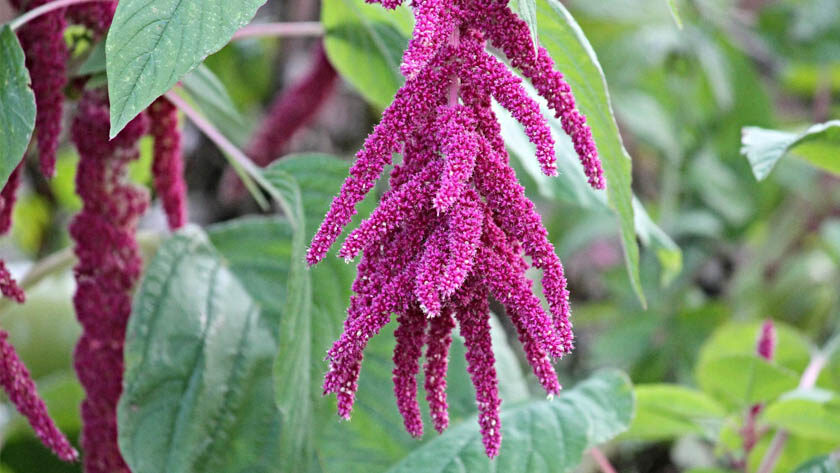What is amaranth, cereal, or an ornamental flower? If you read this article, will you find out the mystery? We need to talk about whether amaranth is a type of cereal or a type of flower.
Amaranth is a cosmopolitan genus of annual or short-lived perennials, collectively known as amaranth. Some species of amaranth are grown as leafy vegetables, pseudocereals, and ornamental plants. Most species of Amaranthus are annual summer weeds and are commonly referred to as pigweeds.
Is amaranth a pseudocereal ?

Being cultivated for almost 8000 years, we can say that amaranth is part of the category of ancient cereals, being widely consumed by the ancient Inca, Mayan and Aztec civilizations. The amaranth grain is not exactly one hundred percent cereal but is in the pseudocereal category. What is a pseudocereal?
A pseudocereal or pseudo-grain is one of any non-herbs used almost the same way as cereals (natural cereals are herbs). It is a seed with nearly the same nutrients as cereals, like wheat, oats, and corn.
It is essential because it has no gluten and is rich in fiber, protein, and antioxidants, thus boosting our health if we consume it in different culinary preparations.
Amaranth can be cooked in two forms, either as seed or as flour.
Like seeds, we can cook amaranth as if we were cooking rice. We boil water and then add amaranth and wait for it to boil and be ready; the amaranth food can be served, along with a salad or whatever we each have.
No one does not love popcorn. In addition to the classic popcorn, we can also make amaranth if we want another new flavor.
Amaranth flour is obtained by grinding amaranth beans. You can use them in various baking products, such as assorted pastries or indifferent sauces, to give them a thickening touch.
Amaranth tastes similar to walnut. Regarding amaranth recipes, we can put them in a salad, soups, cakes, or make a healthy snack, giving us a supply of minerals, proteins, and vitamins for our body.
Is amaranth a treatment?

Amaranth benefits
- Amaranth flour
One of the essential benefits of amaranth is that it makes gluten-free flour.
Many people have gluten intolerance, and amaranth flour is an excellent alternative for various culinary preparations.
2. It is suitable for inflammation
Almost all of us have faced a specific type of inflammation throughout our lives that have caused us pain. And to alleviate this pain, we had to take various medications.
Now we can treat these pains that inflame our body naturally with the help of amaranth oils that have anti-inflammatory properties. We can also use amaranth oil if we have minor wounds or face certain skin conditions.
3. Keeps cholesterol low
Amaranth is a suitable, organic variant if we have problems with high cholesterol, so consuming amaranth berries causes cholesterol LDL to decrease.
4. Helps the digestive system
Having a high fiber content helps the normal functioning of the digestive system. It also prevents permeable bowel syndrome.
5. Amaranth is a source of vitamins
With so many benefits, we could not help but offer a variety of vitamins, such as A, C, E, K, B5, and B6, which act as antioxidants.
6. Helps to lose or maintain weight
What worries many of us is losing weight. We practically manage to lose weight or maintain a certain weight by consuming amaranth. Because it is an excellent source of protein, it tends to keep you feeling full of the village for longer. Amaranth also strengthens bones, so it helps you move as much as possible
7. Helps maintain natural hair color
Amaranth is the solution for those who are not followers of hair dyeing and want to keep their natural hair color as much as possible.
This helps prevent the appearance of white fires due to the high level of minerals that this seed has.
8. Boosts Immune System
Amaranth strengthens the immune system by considerably contributing fiber, minerals, proteins, vitamins, and antioxidants.
Now we can understand that it was not used in vain by ancient civilizations and is still used today. Its many properties make it a food, a treatment that we must not miss in our lives.
Is amaranth an ornamental plant?

Amaranth can also be an ornamental plant. Nowadays, it is more and more common in flower gardens, bringing a stop to blossom through the flowers on which it is present and through the fungi.
Amaranth plants grow tall; they should be placed in an area of the garden with tall plants without shading other plants of smaller sizes.
Amaranth flowers can grow upwards, vertically, like the red variety, but can also grow like the green amaranth variety.
What I find interesting is that the red leaf amaranth variety is entirely red, both the roots, the stem, the leaves, and the flowers.
We can also plant bitter and then use it in bouquets or floral arrangements, fresh flowers, and dried.
Amaranth flowers also have a special meaning in representing immortality and eternal life. And why is it associated with eternal life? Because it does not die after we cut it but becomes a dried flower, passing its shape and color as if it were alive.
Another meaning of the amaranth flower is love, admiration, and friendship. In some states, the bride and groom on their wedding day offer each other an amaranth flower as a sign that their love will last forever.
Amaranth Care

Amaranth is a very demanding plant in terms of its care, and it is a plant that can withstand even drought.
This requires the soil to be well-drained and the air to reach it, not to be suffocated by other plants, practically to have continuous air circulation.
Sunlight is essential for the growth and development of amaranth.
As I said, it is also resistant to drought, it can grow in poor soils, and the amount of water with which it must water should be moderate, without the need for a lot of water.
Amaranth loves heat, so it is an ideal plant to be planted in the summer. Amaranth does not require fertilizer, and in terms of their multiplication, it is elementary to make pine seeds formed after the flowers have passed.
Types of Amaranth
- Amaranthus caudatus’ Coral Fountain.’
- Amaranthus cruentus ‘Hopi Red Dye’
- Amaranthus tricolor’ Joseph’s Coat.’
- Amaranthus hypochondriacus ‘Green Thumb.’

After explaining the meanings of amaranth, we can say that it can be a pseudocereal, an ornamental plant, and a treatment.





